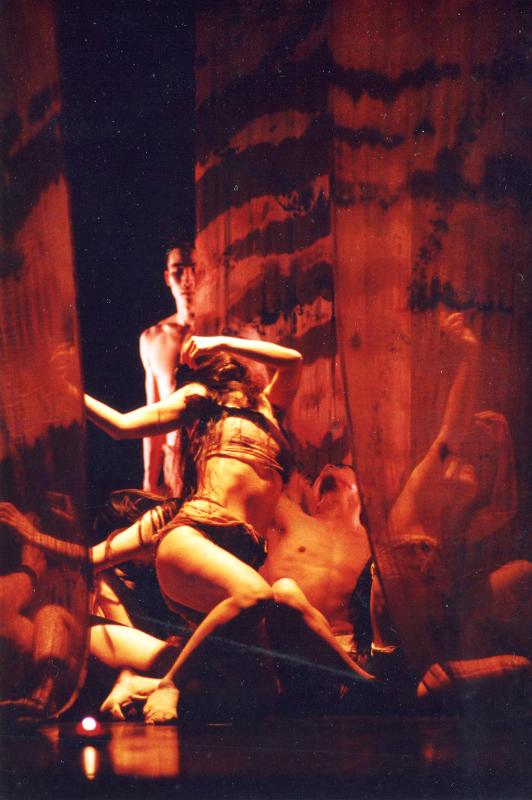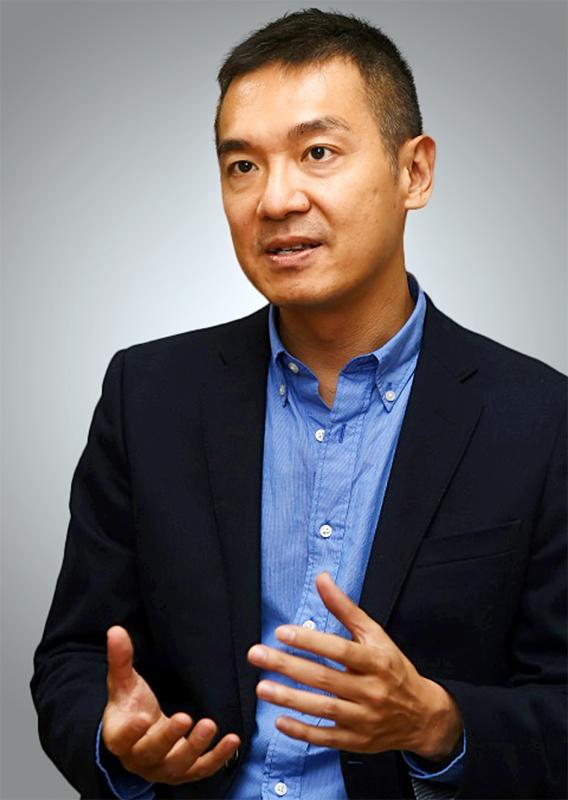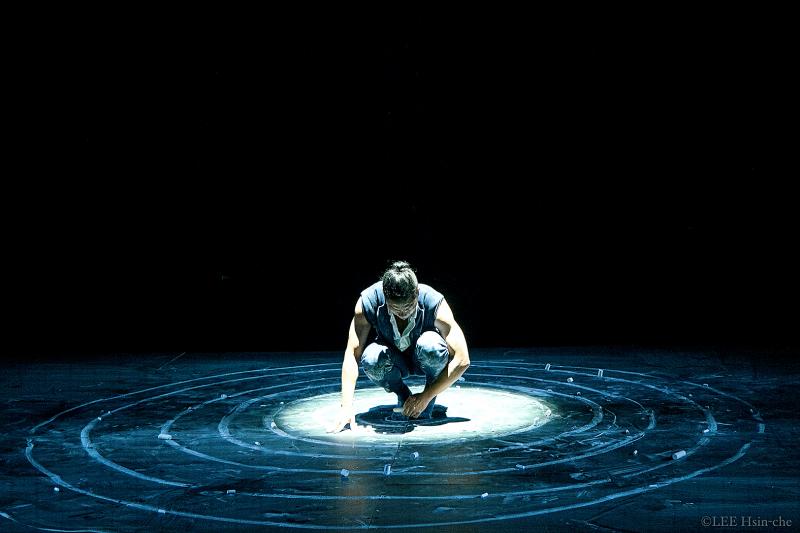Since its launch in 2014, the Taiwan Season has increasingly become a “must-see” at the Edinburgh Festival Fringe. So, when this year’s three-week Fringe became an early casualty of the COVID-19 coronavirus pandemic, Chen Pin-chuan (陳斌全) was determined that the Taiwan Season must continue in some form.
Chen, director of the Cultural Division of the Taipei Representative Office in the UK, says that he and Taiwan Season curator and producer Yeh Jih-wen (葉紀紋) had been thinking of ways of growing and adding value to the season anyway. The crisis and the cancellation of the live performances brought those ideas forward as the pair quickly put together a digital program of cultural close encounters.
Titled “Connecting with Taiwan” and running from today to Aug. 28, thrice weekly streamings feature artist interviews with each of the leaders of the four dance companies that had been set to present live work in Edinburgh this year, and eight Webinars that look at aspects of the performing arts in Taiwan more generally. It’s a mix that Chen feels “makes us a little bit unique.”

Photo courtesy of Hung Dance
The interviews open with Cheng Hao (鄭皓), who will speak about how his background in math gives him a unique perspective on both abstract ideas and live performance, realized in his originally scheduled Touchdown (觸底的形色).
Lai Hung-chung (賴翃中) then discusses his intense and sometimes dark work, Boundless (無盡·天空) for Hung Dance (翃舞製作), followed by Yang Nai-hsuan (楊乃璇) talking about her Fighters (五虎將) for Les Petites Choses Production (小事製作), a work that sees five god-like characters spring to life in a fusion of hip hop and contemporary dance.
Finally, Lin Hsiu-wei (林秀偉), founder of Tai Gu Tales Dance Theater (太古踏舞團), will discuss The Back of Beyond (無盡胎藏) and the fusion of Eastern cultural traditions and contemporary Western practices that have been the company’s trademark for over 30 years.

Photo courtesy of Tai-Gu Tales Dance Theatre
While the interviews will include excerpts, it was decided not to stream the four works in full. Chen says that watching dance in two dimensions online is very different to watching it in three dimensions live on stage.
“I think pieces need to be created differently for online,” Yeh adds. “Not everything is right for streaming. There are also complex issues around intellectual property rights that would need resolving; and anyway we wanted to reserve them for the audiences we hope will come to watch in theaters next year.”
The four companies will also participate in a showcase featuring work from fourteen countries being curated by the Fringe Society, organisers of the festival.

Photo courtesy of Cultural Division, Taipei Representative Office in London
In the Webinars, all in English, the focus switches to the performing arts in Taiwan more generally. While there should be plenty of interest for local artists, arts administrators and educators, the diverse range of topics has been selected carefully to appeal to those abroad curious about the state of the arts in the country, and keen to make connections.
The discussions between presenters, producers, researchers and educators from Taiwan and overseas lead off with two sessions reflecting on the present and future role of Taiwan’s arts and culture centers with regard to international co-operation and arts education.
Other topics include a look at contemporary performance for disabled artists, an area that Yeh considers especially ripe for international exchange and collaboration; cross-cultural translation, how ideas about what choreography is are expanding and the curation and production of indigenous dance.

Photo courtesy of Lee Hsin-che
These may be difficult times, especially for the performing arts, but Chen does see this year’s new-look season bringing opportunities. “Now we can promote the Taiwan Season globally. Previously, people could only participate if they were at the event. Now they can participate from anywhere.”
Indeed, he thinks combining in-theater or in-person live events with interviews and discussions online is a strategy likely to be a feature of future Taiwan Seasons. “The physical events will always be very important but we are starting to understand how we can use the Internet not only to promote the season but make conversations happen and increase understanding. It can also add to the experience for those who attend performances.”
Looking back to March, Yeh recalls being so depressed when the cancellation of the Fringe was first announced.
“But it was really important that we did not just cancel the Taiwan Season. That would have been very easy. We have had to learn fast, and we are still learning, but have a plan, and we are confident it will deliver.”
Both the interviews and Webinars will remain available online so that people can go back and watch them later.
For more details and to register for the Webinars, visit: sites.google.com/view/taiwanseason-edinfringe

Last week Joseph Nye, the well-known China scholar, wrote on the Australian Strategic Policy Institute’s website about how war over Taiwan might be averted. He noted that years ago he was on a team that met with then-president Chen Shui-bian (陳水扁), “whose previous ‘unofficial’ visit to the US had caused a crisis in which China fired missiles into the sea and the US deployed carriers off the coast of Taiwan.” Yes, that’s right, mighty Chen caused that crisis all by himself. Neither the US nor the People’s Republic of China (PRC) exercised any agency. Nye then nostalgically invoked the comical specter

Relations between Taiwan and the Czech Republic have flourished in recent years. However, not everyone is pleased about the growing friendship between the two countries. Last month, an incident involving a Chinese diplomat tailing the car of vice president-elect Hsiao Bi-khim (蕭美琴) in Prague, drew public attention to the People’s Republic of China’s (PRC) operations to undermine Taiwan overseas. The trip was not Hsiao’s first visit to the Central European country. It was meant to be low-key, a chance to meet with local academics and politicians, until her police escort noticed a car was tailing her through the Czech capital. The

April 15 to April 21 Yang Kui (楊逵) was horrified as he drove past trucks, oxcarts and trolleys loaded with coffins on his way to Tuntzechiao (屯子腳), which he heard had been completely destroyed. The friend he came to check on was safe, but most residents were suffering in the town hit the hardest by the 7.1-magnitude Hsinchu-Taichung Earthquake on April 21, 1935. It remains the deadliest in Taiwan’s recorded history, claiming around 3,300 lives and injuring nearly 12,000. The disaster completely flattened roughly 18,000 houses and damaged countless more. The social activist and

Over the course of former President Ma Ying-jeou’s (馬英九) 11-day trip to China that included a meeting with Chinese Communist Party (CCP) leader Xi Jinping (習近平) a surprising number of people commented that the former president was now “irrelevant.” Upon reflection, it became apparent that these comments were coming from pro-Taiwan, pan-green supporters and they were expressing what they hoped was the case, rather than the reality. Ma’s ideology is so pro-China (read: deep blue) and controversial that many in his own Chinese Nationalist Party (KMT) hope he retires quickly, or at least refrains from speaking on some subjects. Regardless